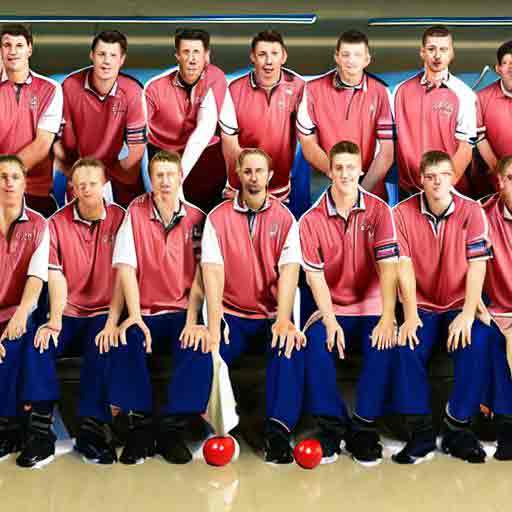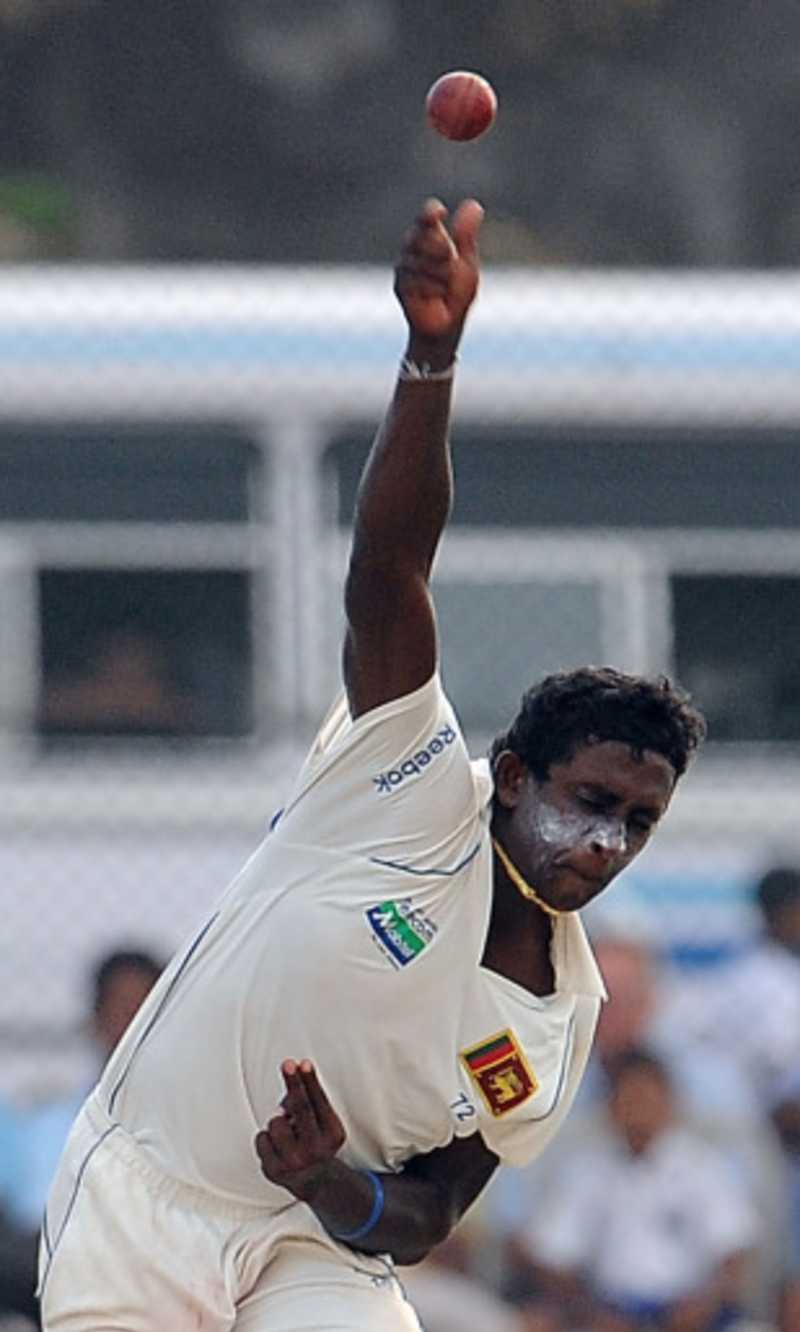How many players on a bowling team? A standard bowling team consists of four players. Depending on the league, teams can have three to five members.
Bowling is a popular sport that brings together individuals of diverse ages and skill levels. A typical bowling team lines up with four players; however, certain leagues and formats allow teams to vary in size, often ranging from three to five.
Recreational and competitive leagues use these team structures, fostering a social atmosphere where players enjoy the camaraderie of the game. Regular league play often occurs weekly, setting a stage for friendly competition and skill improvement. Adherence to these team sizes is crucial for maintaining fairness and consistency in league standings and tournaments. The sport’s accessibility and the simple yet strategic nature of its team dynamics make bowling an enduring favorite for group outings and professional competitions alike.

Credit: www.milb.com
Introduction To Bowling Teams
Welcome to the dynamic world of bowling teams, where coordination, strategy, and teamwork combine to create excitement on the lanes! Whether you’re a seasoned pro or a newcomer to the sport, understanding the synergy within a bowling team is crucial. Teams vary in size, but each configuration has its own charm and challenges. Let’s dive into the essence of bowling teams and discover how many players roll in unison toward victory.
Understanding The Basic Structure
The foundational makeup of a bowling team generally consists of a specific number of players who aim to knock down pins in a collective effort. Each participant contributes to the team’s overall score. A core aspect of team bowling is the camaraderie and support that players provide each other, turning an individual sport into a collective endeavor.
- Minimum and Maximum Players: Bowling teams usually involve a set minimum and maximum number of players to ensure fair play and equal opportunities.
- Consistent Participation: Members of a team often play together regularly, fostering a strong sense of unity and consistency in performance.
Variations In Different Leagues And Formats
Bowling leagues and competitions may have unique rules dictating the size of teams. The traditional league team size is influenced by various factors, including league rules, the number of lanes available, and the competitive format.
| League Type | Common Team Size | Notes |
|---|---|---|
| Recreational | 3-6 players | Social, more flexible with rules |
| Competitive | 4-5 players | Standard in many tournaments |
| Professional | 5 players | Strict adherence to professional standards |
Note: Actual team size may vary based on local or event-specific regulations.
Exploring The Significance Of Team Size
The number of players on a bowling team is not just a numerical aspect; it significantly impacts strategy, cohesion, and even the social aspect of the sport. A larger team size can mean more diverse skill sets, while a smaller team may require each player to perform consistently at a higher level. This creates an interesting dynamic, where the individual performance and team strategy play equally vital roles in the overall success.
- Team Chemistry: Smaller teams may develop chemistry quicker due to more frequent interactions among players.
- Individual Contribution: Larger teams can distribute pressure more evenly, lowering the burden on a single player.
- Adaptability: Teams must be capable of adapting to various team sizes, depending on league requirements.
Each team size presents a unique set of advantages and challenges, making the understanding of team dynamics an exciting and crucial part of the sport.
Standard Bowling Team Compositions
Bowling teams come in various sizes, each offering a unique dynamic and strategy to the sport. While casual play might not adhere to strict rules regarding team size, organized leagues and tournaments typically have set standards. Understanding the standard bowling team compositions is essential whether you’re a beginner looking to join a league or an experienced bowler forming a competitive team.
The Common Four-Player Team
The Common Four-player Team
Most bowling leagues embrace the four-player team format as the gold standard. This format strikes a good balance between camaraderie and individual performance, allowing players to support each other while also showcasing their skills. The four-player team is composed of:
- Lead-off: The player who sets the tone for the game.
- Second: The player who follows, trying to maintain momentum.
- Third: Often the one to set up for the final player, bringing strategy into play.
- Anchor: The last player, typically the strongest, tasked with clinching the game.
Teams of Three and Five Players
Teams Of Three And Five Players
Bowling teams can also consist of three or five players. These compositions are particularly popular in smaller leagues or when accommodating an odd number of participants. The dynamic changes with these variations but the underlying principles of teamwork remain the same. For example, a three-player team will have each member playing a more significant role per game, while a five-player team offers more depth and potential for strategic plays.
| Team Size | Player’s Contribution |
|---|---|
| Three Players | Each player has a heightened presence in the game. |
| Five Players | More room for strategic depth and varied skill sets. |
Singles and Doubles Play
Singles And Doubles Play
While team play is a major draw for bowling enthusiasts, singles and doubles competitions hold their unique allure. Singles play is the ultimate test of skill, where one player competes head-to-head with another. Conversely, doubles play requires a duo to collaborate and unseat their rivals. These formats are perfect for sharpening individual skills and forging strong partnerships on the lanes.
- Singles Play: One-on-one action, each bowler against the pins and their opponent.
- Doubles Play: Two-player teams working in tandem to outscore the competition.
Whether participating in a four, three, or five-player team, or engaging in singles and doubles competitions, bowling always offers a distinctive blend of social interaction and sporting challenge. Choose your team size and head to the lanes to enjoy all the competitive fun bowling has to offer.
Bowling teams come in various sizes, each offering a unique dynamic and strategy to the sport. While casual play might not adhere to strict rules regarding team size, organized leagues and tournaments typically have set standards. Understanding the standard bowling team compositions is essential whether you’re a beginner looking to join a league or an experienced bowler forming a competitive team.
The Common Four-Player Team
The Common Four-player Team
Most bowling leagues embrace the four-player team format as the gold standard. This format strikes a good balance between camaraderie and individual performance, allowing players to support each other while also showcasing their skills. The four-player team is composed of:
- Lead-off: The player who sets the tone for the game.
- Second: The player who follows, trying to maintain momentum.
- Third: Often the one to set up for the final player, bringing strategy into play.
- Anchor: The last player, typically the strongest, tasked with clinching the game.
Teams of Three and Five Players
Teams Of Three And Five Players
Bowling teams can also consist of three or five players. These compositions are particularly popular in smaller leagues or when accommodating an odd number of participants. The dynamic changes with these variations but the underlying principles of teamwork remain the same. For example, a three-player team will have each member playing a more significant role per game, while a five-player team offers more depth and potential for strategic plays.
| Team Size | Player’s Contribution |
|---|---|
| Three Players | Each player has a heightened presence in the game. |
| Five Players | More room for strategic depth and varied skill sets. |
Singles and Doubles Play
Singles And Doubles Play
While team play is a major draw for bowling enthusiasts, singles and doubles competitions hold their unique allure. Singles play is the ultimate test of skill, where one player competes head-to-head with another. Conversely, doubles play requires a duo to collaborate and unseat their rivals. These formats are perfect for sharpening individual skills and forging strong partnerships on the lanes.
- Singles Play: One-on-one action, each bowler against the pins and their opponent.
- Doubles Play: Two-player teams working in tandem to outscore the competition.
Whether participating in a four, three, or five-player team, or engaging in singles and doubles competitions, bowling always offers a distinctive blend of social interaction and sporting challenge. Choose your team size and head to the lanes to enjoy all the competitive fun bowling has to offer.
Bowling League Dynamics
Bowling leagues create the perfect storm of competition, camaraderie, and skill. With a variety of team structures, league formats, and scheduling nuances, bowling leagues offer a unique social and competitive environment. Every league has its specific dynamics, but there are common threads that weave through the heart of the league scene, which are weekly meet-ups, scoring intricacies, and the role of substitutes. Let’s roll into the details of what makes a bowling league truly tick.
Weekly Meet-ups And Scheduling
Consistency is key in any bowling league, and regular weekly meet-ups fortify team bonding and enhance the overall competitive experience. Teams usually converge on bowling alleys at a consistent day and time each week, creating a routine that players look forward to. The importance of scheduling cannot be overstated as it ensures all players are on the same page and reduces the likelihood of missed games which can impact team standings.
Scoring And Competition Formats
Every bowl counts! The scoring system in a league is both straightforward and complex. Understanding the scoring is crucial as the method of scoring—be it traditional, Baker format, or any other variation—informs the strategic approach teams take during play. Leagues may opt for a cumulative scoring format where every pin knocked down adds to the team’s ongoing tally, or a match play format where teams earn points based on head-to-head matches against their opponents each week.
The Role Of Substitutes And Extras
Life’s curveballs mean sometimes a player can’t make it to the lanes. That’s where substitutes (subs) and extra players play an essential role. These players can step in to ensure that a team remains in full force, avoiding forfeits. Having a strong roster of subs not only helps in times of absence but can also provide strategic advantages, allowing teams to adapt to different competition styles and lane conditions. The ability to recruit and manage extras effectively often plays a subtle but significant role in a team’s success.

Credit: www.tripadvisor.com
Special Considerations
When it comes to bowling, whether you’re rolling strikes in a ten-pin alley or sending down jacks in lawn bowls, there are essential factors that can impact the dynamics of your team. Understanding the intricacies of team structure and roles can significantly influence success on the lanes. Let’s delve into some of these special considerations that could give you and your team the edge.
Team Formation Strategies
When assembling your bowling squad, remember that team synergy is paramount. A well-balanced team not only meshes better but also adapts swiftly to different lanes and conditions. Consider these strategies for constructing your lineup:
- Experience Balance: Mix seasoned players with novices to foster mentorship and growth.
- Skill Diversity: Ensure your team has a good mix of specialists—perhaps one who excels in spares or another known for consistent strikes.
- Availability: Commitment matters; ensure team members can consistently participate in matches and practice sessions.
Bowler Positions And Responsibilities
While bowling might seem like a solo sport, team play introduces specific roles. Here’s a quick rundown:
| Position | Responsibility |
|---|---|
| Lead-off | Starts the game, sets the tone and pace. |
| Anchor | Closes the game, usually the most consistent and strategic player. |
| Middle Order | Keeps the momentum going, aiming to capitalize on opportunities. |
Lawn Bowls Vs. Ten-pin: Team Size Differences
In lawn bowls, teams can vary; with pairs (two players), triples (three players), and fours (four players) being common formations. Each player has distinct bowls to deliver; pairs typically play with four each, triples with three, and fours with two. Contrastingly, ten-pin bowling teams usually comprise four or five players. Despite the difference in the number of participants, strategy and coordination remain crucial across both disciplines.
- Lawn Bowls Pairs: Two players per team, eight bowls each.
- Lawn Bowls Triples: Three players per team, six bowls in total.
- Lawn Bowls Fours: Four players per team, eight bowls in total.
- Ten-Pin Bowling: Usually four or five players per team with each player taking their turn frame by frame.

Credit: www.facebook.com
Frequently Asked Questions Of How Many Players On A Bowling Team
How Many Bowlers Make Up A Team?
A standard bowling team consists of four players.
How Many Players Are Needed For A Bowling Team?
A standard bowling team typically consists of four players.
How Many Players Are On A Bowls Team?
A bowls team typically consists of one, two, three, or four players.
How Many Players Are In A Bowling Lane?
A standard bowling lane typically accommodates up to six players for casual play.
Conclusion
Wrapping up, the size of a bowling team can vary, typically ranging from three to five members. The flexibility in team size allows for varied league formats and accommodates different group sizes. Whether you’re in a casual or competitive league, the number of players can impact your strategy.
So, gather your friends, form a team, and enjoy the camaraderie and competition that bowling has to offer!

Passionate Bowler and Bowling Enthusiast
Jess Pinelli is a dedicated bowling enthusiast with a deep love for the sport that spans over 6 years. With numerous strikes, spares, and a few gutter balls under hes belt, he has honed his skills on lanes across the country. Pinelli’s journey in the world of bowling has been a remarkable one, from casual weekend games with friends to competitive league play and even a few local tournaments.
Driven by her passion for the game, Pinelli decided to channel her expertise and knowledge into the digital realm, becoming a prolific author on this bowling website. She’s your go-to source for everything bowling-related, from mastering the perfect hook to choosing the right bowling ball and even navigating the world of bowling etiquette.
When she’s not busy writing informative articles or reviewing the latest bowling gear, you’ll likely find Pinellis at her favorite local bowling alley, helping newcomers improve their game or enjoying some friendly competition with fellow bowlers. She firmly believes that bowling is not just a game but a community, and she’s committed to fostering that sense of camaraderie both online and offline.




